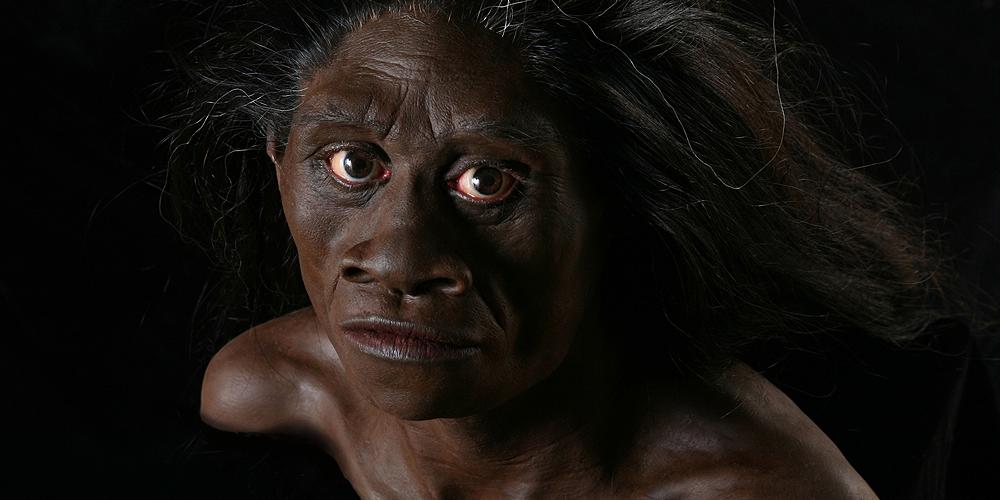
Hobbitar dog ut tidigare än forskarna anat
De små dvärgmänniskorna på ön Flores i Indonesien, tycks ha dött ut långt tidigare än vad forskarna trott. Enligt en ny studie som publiceras i tidskriften Nature är alla fossilen mellan 60 000 och 100 000 år gamla. Det innebär troligen att Homo floresiensis, kallade hobbitar, aldrig mötte vår egen art Homo sapiens.
Homo floresiensis var bara lite drygt en meter lång, hade korta ben men långa armar.
bakgrund
Homo floresiensis
Wikipedia (en)
Homo floresiensis ("Flores Man"; nicknamed "hobbit") is an extinct species widely thought to be in the genus Homo. The remains of an individual that would have stood about 3.5 feet (1.1 m) in height were discovered in 2003 on the island of Flores in Indonesia. Partial skeletons of nine individuals have been recovered, including one complete skull, referred to as "LB1". These remains have been the subject of intense research to determine whether they represent a species distinct from modern humans. This hominin is remarkable for its small body and brain and for its survival until relatively recent times (possibly as recently as 12,000 years ago). Recovered alongside the skeletal remains were stone tools from archaeological horizons ranging from 94,000 to 13,000 years ago. Some scholars suggest that the historical H. floresiensis may be connected by folk memory to ebu gogo myths prevalent on the isle of Flores.
The discoverers (archaeologist Mike Morwood and colleagues) proposed that a variety of features, both primitive and derived, identify these individuals as belonging to a new species, H. floresiensis, within the taxonomic tribe of Hominini, which includes all species that are more closely related to humans than to chimpanzees. The discoverers also proposed that H. floresiensis lived contemporaneously with modern humans on Flores.
Doubts that the remains constitute a new species were soon voiced by the Indonesian anthropologist Teuku Jacob, who suggested that the skull of LB1 was a microcephalic modern human. Two studies by paleoneurologist Dean Falk and her colleagues (2005, 2007) rejected this possibility. Falk et al. (2005) has been rejected by Martin et al. (2006) and Jacob et al. (2006), but defended by Morwood (2005) and Argue, Donlon et al. (2006).
Two orthopedic researches published in 2007 reported evidence to support species status for H. floresiensis. A study of three tokens of carpal (wrist) bones concluded there were similarities to the carpal bones of a chimpanzee or an early hominin such as Australopithecus and also differences from the bones of modern humans. A study of the bones and joints of the arm, shoulder, and lower limbs also concluded that H. floresiensis was more similar to early humans and apes than modern humans. In 2009, the publication of a cladistic analysis and a study of comparative body measurements provided further support for the hypothesis that H. floresiensis and Homo sapiens are separate species.
Critics of the claim for species status continue to think that these individuals are Homo sapiens with pathologies of anatomy and physiology. Several hypotheses in this category have been put forward, including that the individuals were born without a functioning thyroid, resulting in a type of endemic cretinism (myxoedematous, ME), and that the principal specimen LB1 suffered from Down syndrome.
Flores, Indonesien
Omni är politiskt obundna och oberoende. Vi strävar efter att ge fler perspektiv på nyheterna. Har du frågor eller synpunkter kring vår rapportering? Kontakta redaktionen